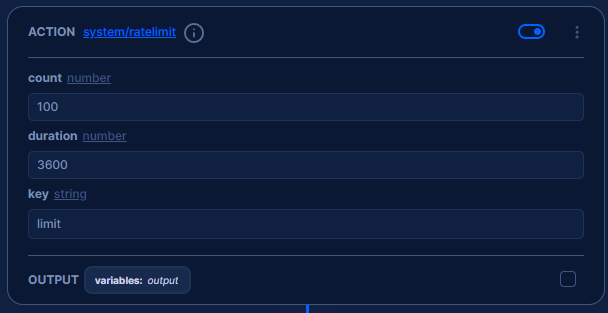Server based rate limiting
Server-Based Rate Limiting
Server-based rate limiting is a vital control mechanism that helps in managing the load on a server and protects it from potential Denial-of-Service (DoS) attacks. This technique sets a limit on the number of requests a client (user, device, IP address, etc.) can make to the server within a specific timeframe.
Here's an overview of how server-based rate limiting works and why it's important.
How It Works
The server keeps track of the number of requests from a client within a specific timeframe. For instance, it might limit each client to 1000 requests per hour. After a client reaches this limit, the server will stop processing additional requests from that client for the remainder of the hour.
In a more sophisticated setup, rate limits might vary based on the type of request, the resources being accessed, or the role of the user making the request.
Benefits of Rate Limiting
- Preventing Server Overload: By limiting the number of requests a client can make, rate limiting helps to ensure that the server remains available to all users and that a high volume of requests from one source doesn't monopolize server resources.
- Security: Rate limiting is a crucial security measure. It helps to protect against DoS attacks, where an attacker attempts to make a large number of requests to overload the server and disrupt service for other users.
- Preventing Abuse: If your server provides a public API, clients might make a large number of requests to scrape data, automate actions, or exploit the API in other ways. Rate limiting can help to prevent such abuses.
Rate Limiting with Autoflow
Autoflow, the API management service, provides built-in action for rate limiting. It allows you to define rules on how many requests a client can make within a certain timeframe. This is a valuable feature for both protecting your server resources and improving the security of your services.
The rate limiting action is shown in the picture below:

API AutoFlow categorizes triggers using a “key” attribute. Rate limits are applied to triggers that share the same key. To implement rate limiting, you can add an action at the beginning of the flow that checks the current usage against the defined limits. Based on the result of this check, you can use a conditional statement to control the subsequent flow of execution.
By utilizing Autoflow's rate limiting action, you can effectively manage traffic, prevent server abuse, and maintain a healthy and efficient server environment. Additionally, Autoflow's rate limiting rules are easy to configure and manage, which can help in implementing an effective rate limiting strategy that fits the specific needs of your server infrastructure.
In summary, server-based rate limiting is an essential control mechanism for maintaining server availability, improving security, and preventing API abuse. With Autoflow, implementing such controls becomes a straightforward task, allowing you to focus on delivering value through your APIs.